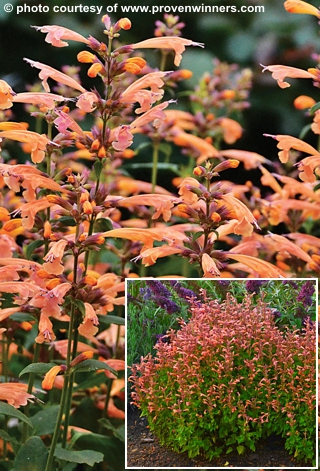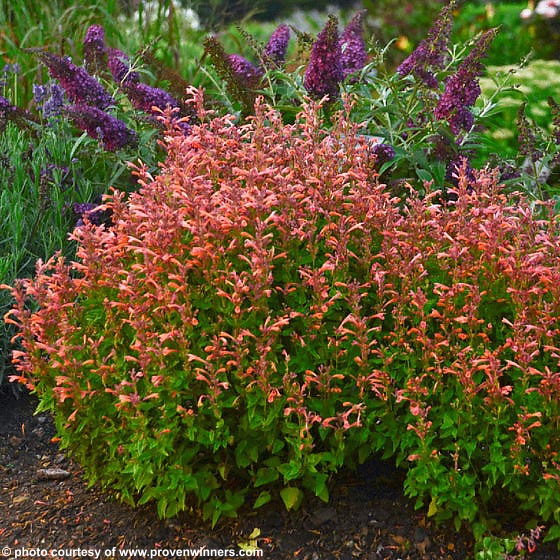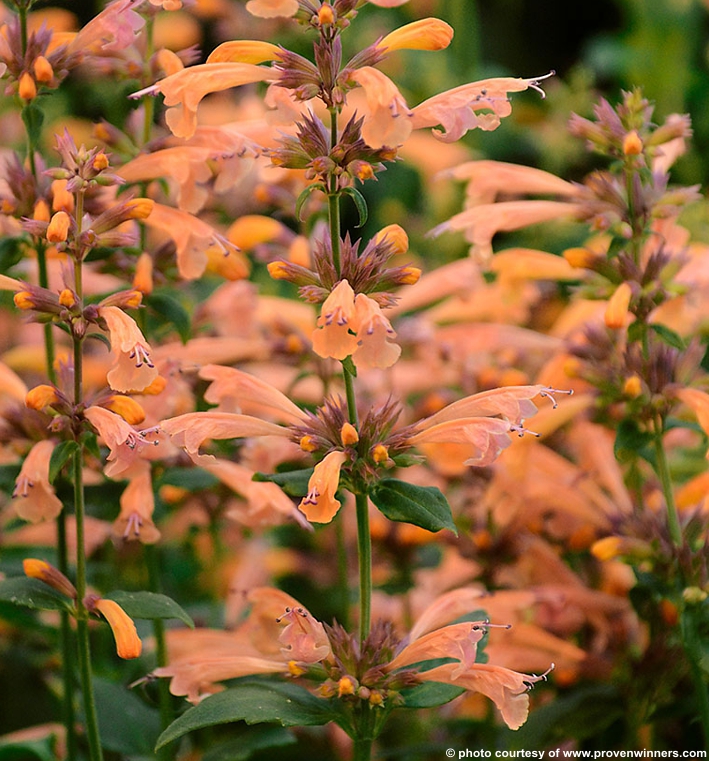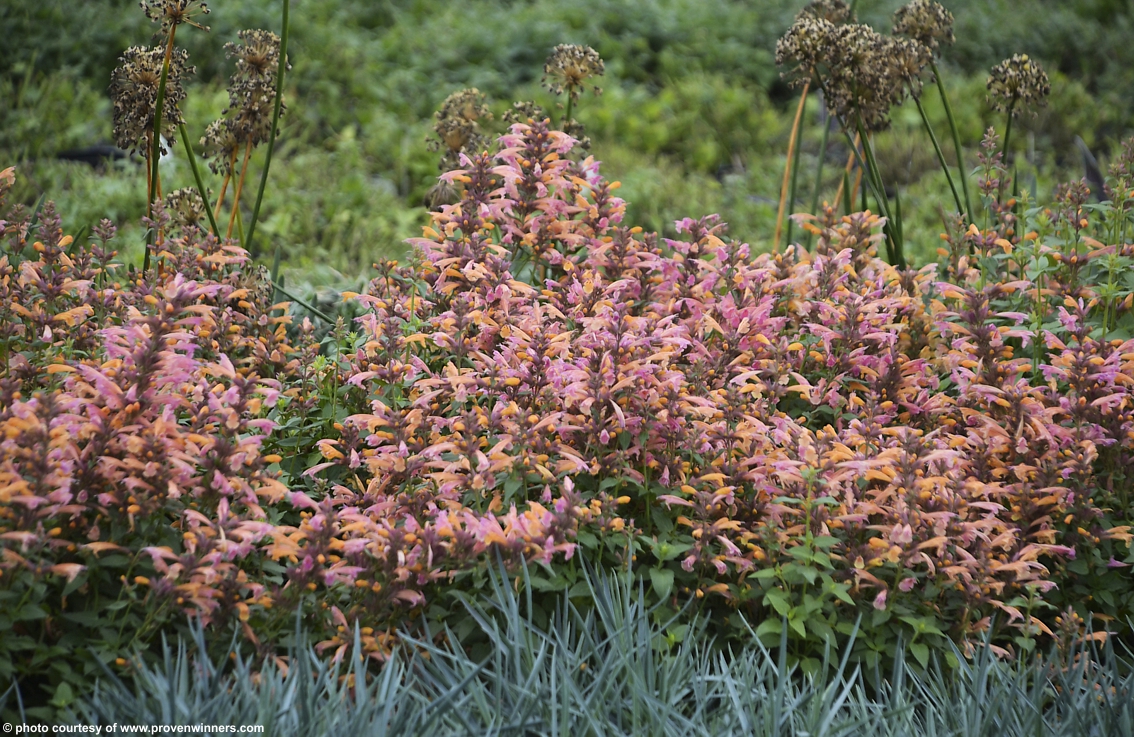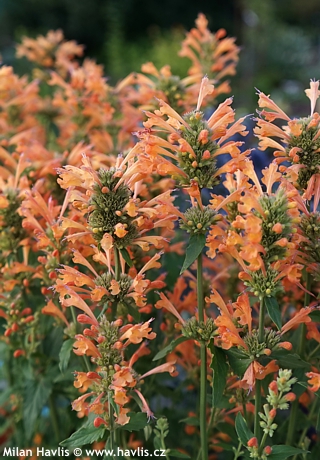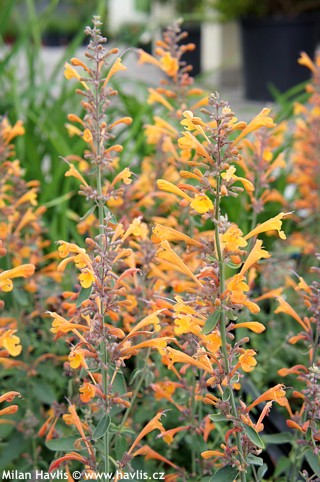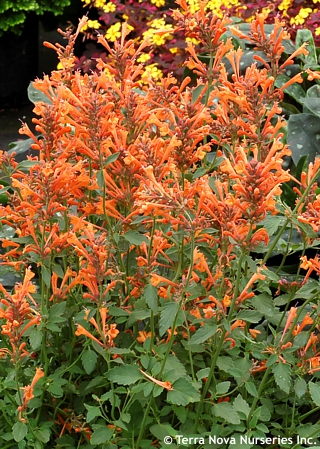Agastache 'MANGO TANGO' agastache, hyssop
Agastache
There are a number of hyssop species found in mostly temperate climate and only a few of them can survive winters of zones 5 or 6. However, it is so beautiful in full bloom that despite its rather short life many breeders work on achieving new hybrids that can cope with zone 6 winters provided suitable conditions. Mango Tango (I be there must be a full board of creative advertisers to keep coming with witty names like this one) is an American variety of hyssop bred by Hans A. Hansen from Walters Gardens Inc. Patent No. PP28747 was granted in 2017 and the plant belongs among Proven Winners®.
Mango Tango is an attractive hybrid perennial hyssop of compact habit. It makes dense clumps with thin, upright stems whose top ¾ are packed with flowers. Flowers are narrowly tubular, pastel orange, and open from dusky rose-pink calyxes which provides a bi-coloured effect. Blooming begins in late July and continues for about two months or by the last sunny and warm days of early autumn. Flowers are so loved by most winged insects such as bees, bumble bees, and butterflies. Leaves are mid green and not as much of ornamental value but great as a perfume producer. They contain an essence which is readily activated by just a soft touch and the foliage ejects a dose of anise and lemon perfume. They can be used to make tea of, for scenting fresh salads, and also pastries when making cooked desserts – the essence brings not only perfume but also anise taste.
Mango Tango agastache needs full sun only and looks stunning in mass plantings. And if I may suggest it is a showcase when you combine three different agastache colours in one bed. The plants demand free-draining soil because in wet ground their roots will most certainly die during winter.
If unsure about your soil type but still you want to grow agastache why don’t you make a raised bed and fill it with quality soil mixed with anything that provides sharp drainage. Such raised bed will come in handy for other plants demanding the same conditions so in the end you will create a whole new microcosmos for plants that were formerly banned from your garden. In return the plants will make your heart melt every time you gaze at them, watching them thrive and provide plenty of colour as well as bee food in late summer. Hardy to about -24 °C (USDA zone 6) and we recommend covering the clump with fir branches in winter.
Last update: 23-08-2021

































